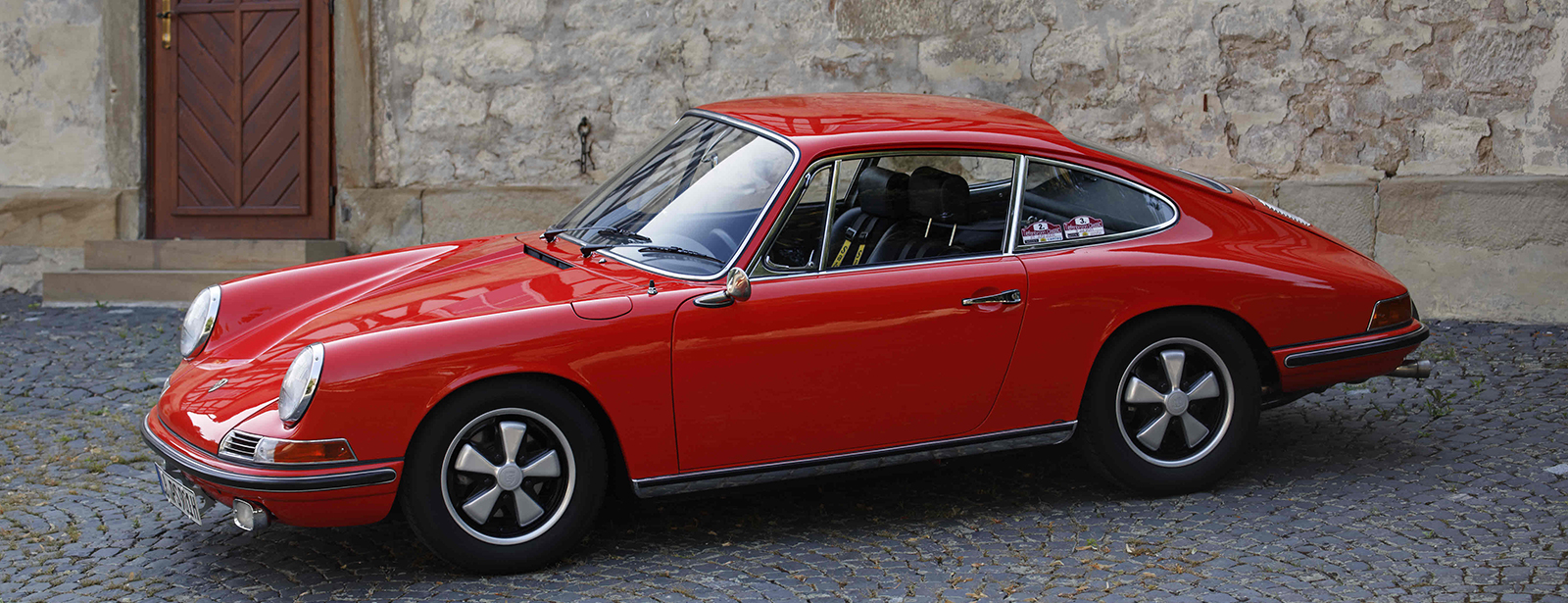The G-body 911 entered the market in 1963 as the Porsche "901". Changed shortly thereafter to "911" due to a branding issue with Peugeot, the car's iconic shape remained largely unchanged for over 25 years leading up to the 964 model.
The first 911 offered a 130 HP flat six under its refined fastback architecture evolving the already cult favorite 356 and further evolving it from its VW roots.
The first Targa model was introduced in 1965 offering an integrated roll bar which has generated much controversy over the years as some believe its the ultimate iconic 911 while others despise its perversion of the original coupe design.
The first performance model 911 was introduced in 1966 - the "911S". The S came with a 160 HP - while perhaps not hot by today's standards represented an increase in power of just under 25% which was substantial. This was also the same year that the iconic Fuchs wheels made their first appearance as a lightweight wheel option.
The '70s 911 experienced continued development as weight decreased through use of aluminium parts and displacement was steadily increased from 2.2 in 1970 to 2.4 and 190 HP for the "S" in 1972. By now, the power to weight and rear engined design gave the 911 its everlasting reputation for being a power, agile driver's machine.
The first RS arrived on the 10 year anniversary. The Carrera RS 2.7 is possibly the most beloved air-cooled Porsche of all time. It made an astonishing 210 HP, weighed only 2300 pounds and introduced the duck tail spoiler - a Porsche fan favorite.
1975 was the first year of the first "blown" Porsche - the 930 Turbo aka, the "Widowmaker" know for sending stock brokers and dentists into ravine's as the engine came on boost suddenly mid revs and timid drivers let off the gas at just the wrong moment to shift the weight off the rear tires and send the back end around front just in time to hit a tree. The 3.0 liter blown six was capable of producing 260 HP making it one of the fastest cars on the planet and the famous "whale tail" caught the attention of every boy in the world.
The often maligned Super Carrera or "SC" arrived with the same 3.0 liter straight six but without the turbo in 1977. More reliable and tune-able than the 2.7 liter engine and produced ~200 HP. The SC was known for being rev-happy and fun to drive but many were starting to feel the 911 was showing its age.
1984 after what some feel was the near death of the 911 as front engined cars were being heavily pushed by Porsche Corporate, the final iteration of the G-body 911 was introduced: the 3.2 Carrera. The 3.2 offered increased displacement, more power and better braking than the SC. In 1987, the long-used 915 transmission was also replaced with a more modern hydraulic Getrag G50 unit which is coveted by many and led the '87-'89 3.2s to be seen as the ultimate blend of new and old 911.

